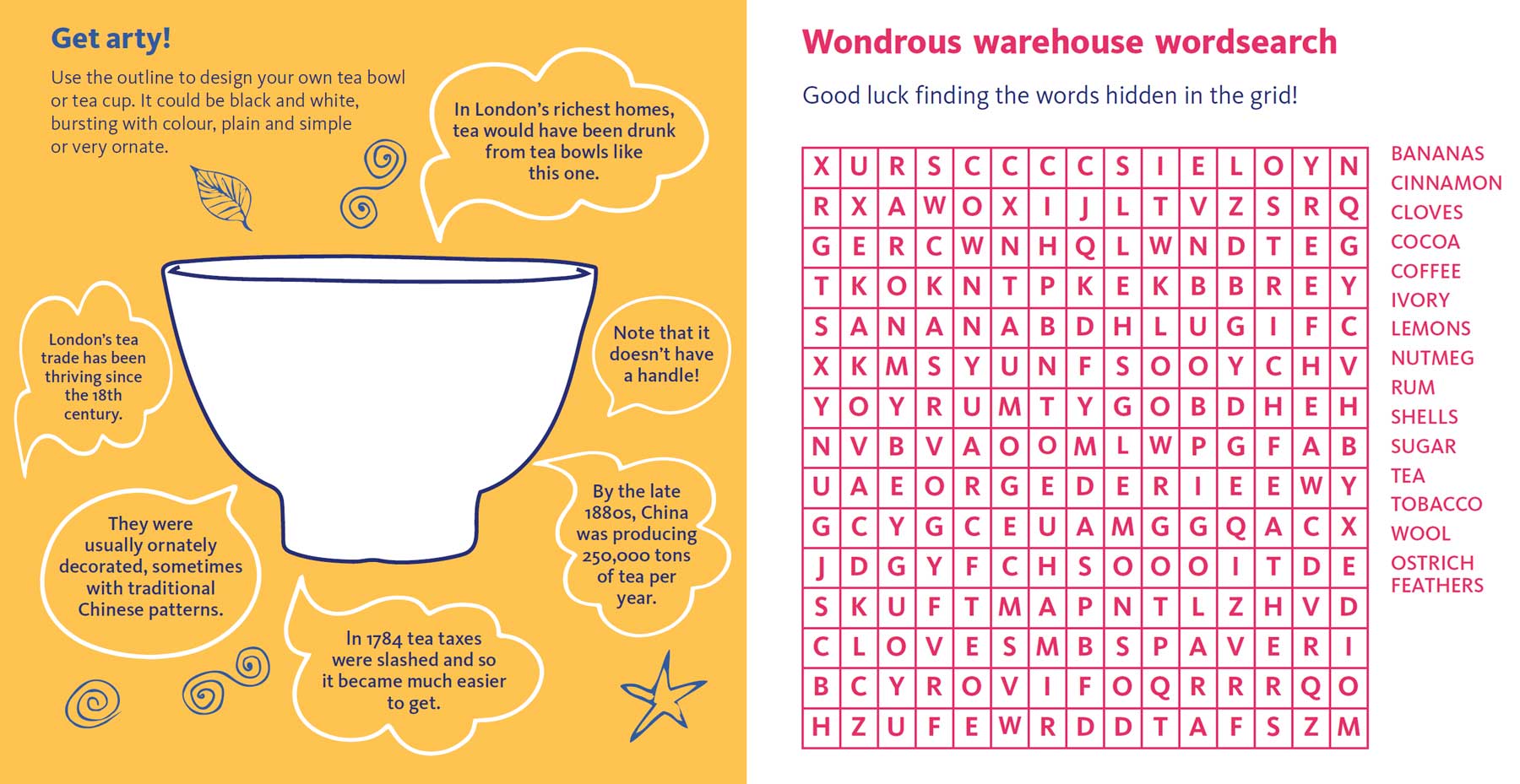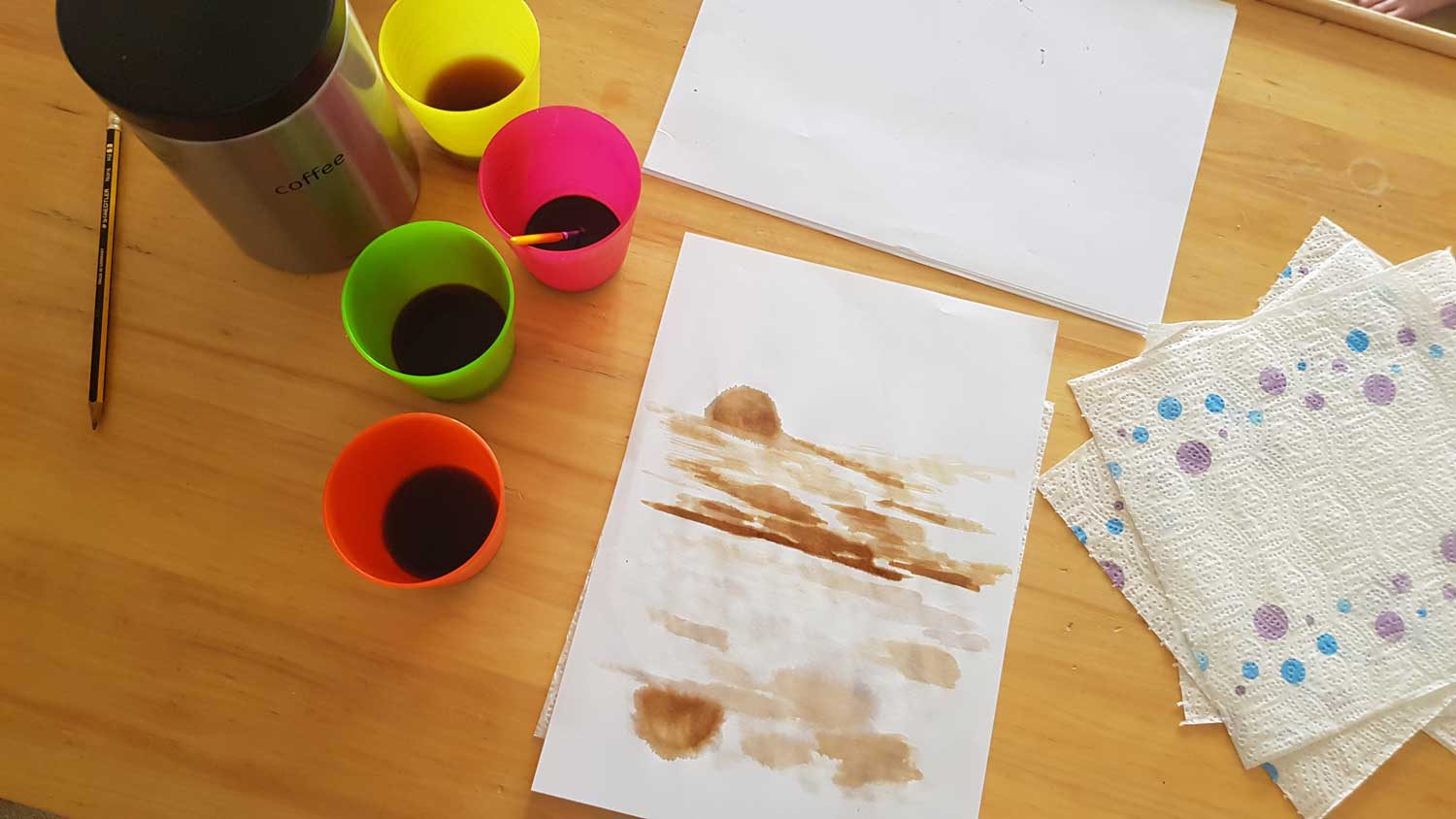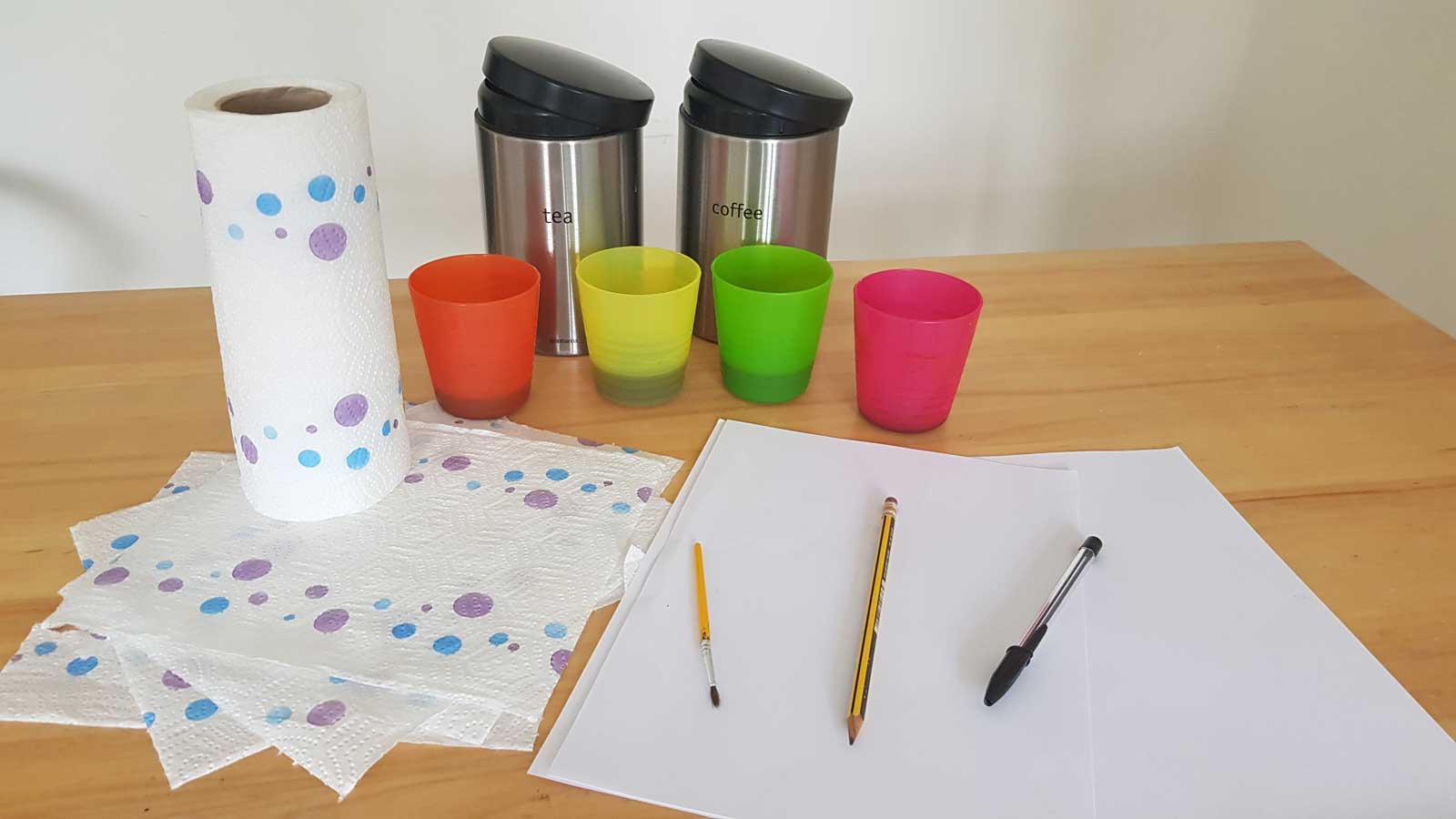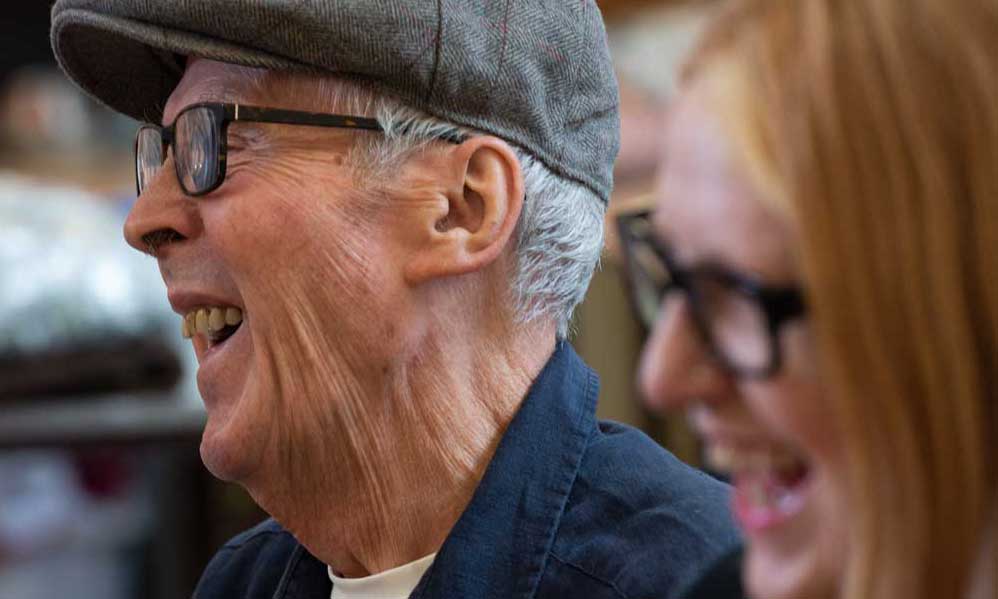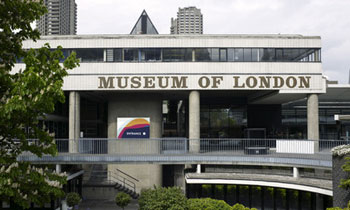- Creative & Connected – January 2021
- Creative & Connected – December 2020
- Creative & Connected – November 2020
- Creative & Connected – October 2020
- Creative & Connected – September 2020
- Creative & Connected – August 2020
- Creative & Connected – July 2020
- Creative & Connected – June 2020
- Creative & Connected – May 2020
Creative & Connected: May edition
Our Memories of London team have designed some simple and creative activities for people affected by dementia, their carers and loved ones. This month: design your own 18th-century tea bowl, have a good old singalong, or try painting with tea and coffee!
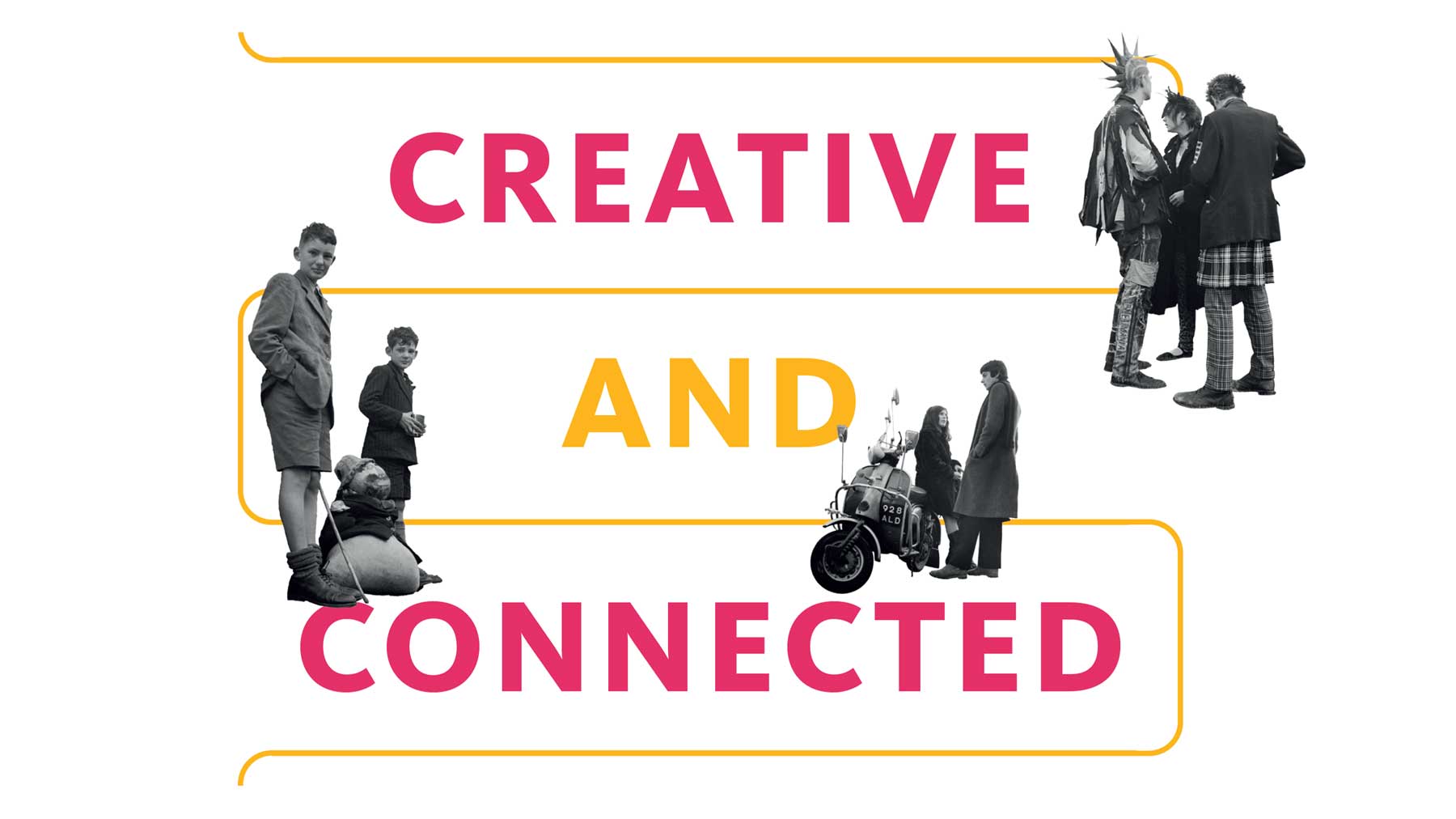
Get your copy now
Simply click the following link to download a PDF copy of this month's Creative & Connected.
We recommend printing it off as it has activities to fill out, trace or complete, such as this artistic challenge and warehouse wordsearch:
However, if you prefer, or if you don't have access to a printer, you can enjoy some of Creative & Connected on this page!
London lives
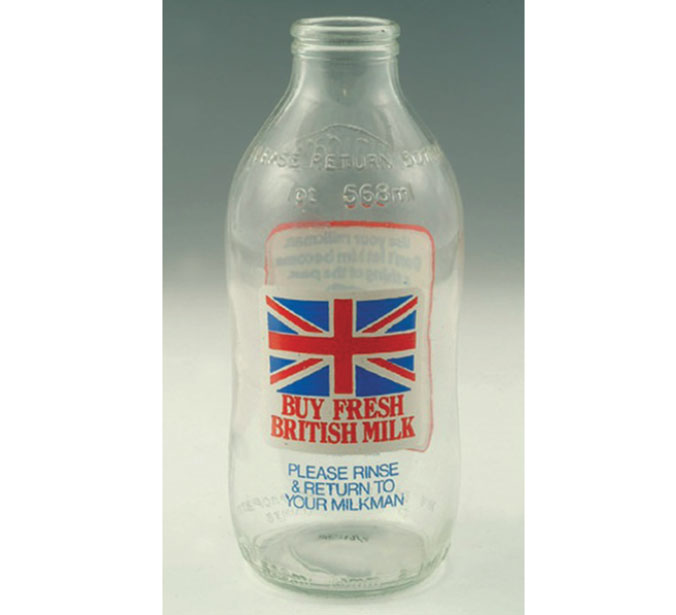
We are creating a series of podcasts, ‘London Lives’, inspired by different objects from our collection. One of these podcasts will feature food and drink in London, and will include this milk bottle.
- Did you used to receive milk at your door?
- Or perhaps you still do?
- What feelings or memories does this object evoke for you?
We’d love to talk to you! If you’d like to share your story email [email protected] and we will get in touch to find out more.
Chat with the artist

Luke Saydon
Looking forward to a chat
You can also dial/phone into a Zoom call with our incredible artist of the month, Luke Saydon, on Wednesday 10 June, 10.30-11.30am, for a cuppa and a chat.
To register please email [email protected] and we will send you all the details of how to take part. If you would rather join us by phone, please also register and we will send you instructions.
If you have any questions we'd love to hear from you at [email protected]!
Tea and treasures
Did you know that the Museum of London Docklands building was originally No.1 Warehouse of the West India Docks? You can explore some of the objects that tell this story here.
This month, we’d like to take you back to the 19th century to a time when exotic goods were pouring in from all over the world. No.1 Warehouse was filled with crates and barrels of rum and sugar, shipped from Jamaica and other parts of the Caribbean to London.
We're going to explore some treasures of the warehouse with some creative activities. If you'd like to discover more about commodities coming into the Port of London, take a look at our Collection in Focus.
Sensory painting
In 1652 London’s very first coffee house opened and by the end of the 19th century, tea was enormously popular with the British public! But have you ever thought about painting with tea or coffee? Why not have a go? Here’s how...
What do you need?
- Paper (of any kind)
- Coffee and/or tea
- Water (best if it is recently boiled, but cold also works)
- Pots or cups
- Kitchen roll/toilet paper (or a paintbrush, if you have one)
How to make it
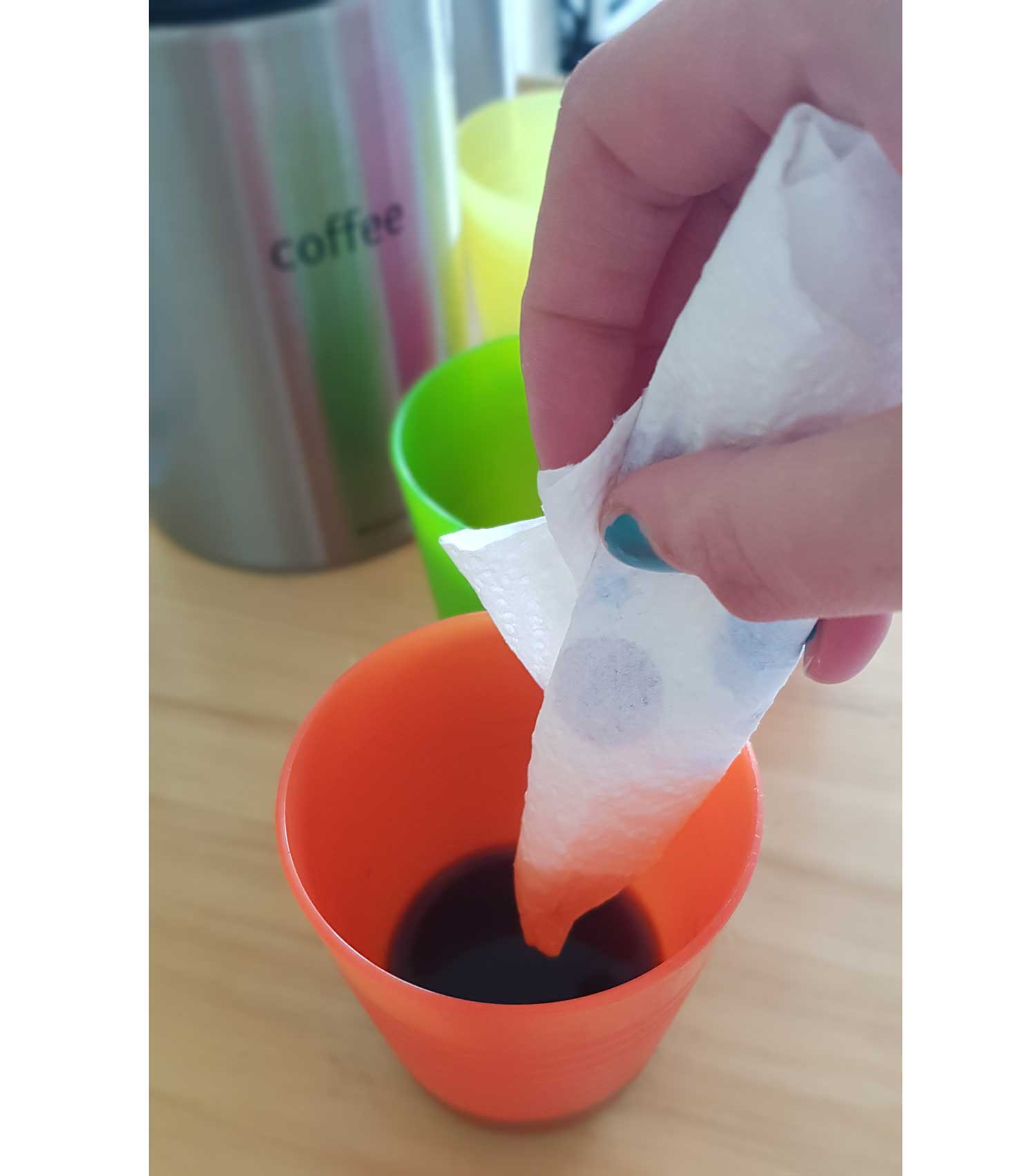
- Brew different strengths of coffee/tea. (Just mix different amounts of hot water and coffee/different types of tea.)
- Experiment with the colours – can you make a dark coloured mix and a very light mix?
- Roll up your piece of kitchen roll or toilet paper and dip the end into the mixture. (If you have access to a small paintbrush, you could use this instead.)
- Dab the coffee/tea-soaked kitchen roll onto your paper. Experiment with different strengths and see what you can paint!
- Leave it to dry.
Smell, touch and taste
As Britain’s Empire expanded in the 19th century, spices and fruits from across the world came into London’s docks. The powerful smells in many of the East End’s warehouses were incredible.
Here are some ideas for how you could use the spices in your own home...
Make an orange & clove pomander
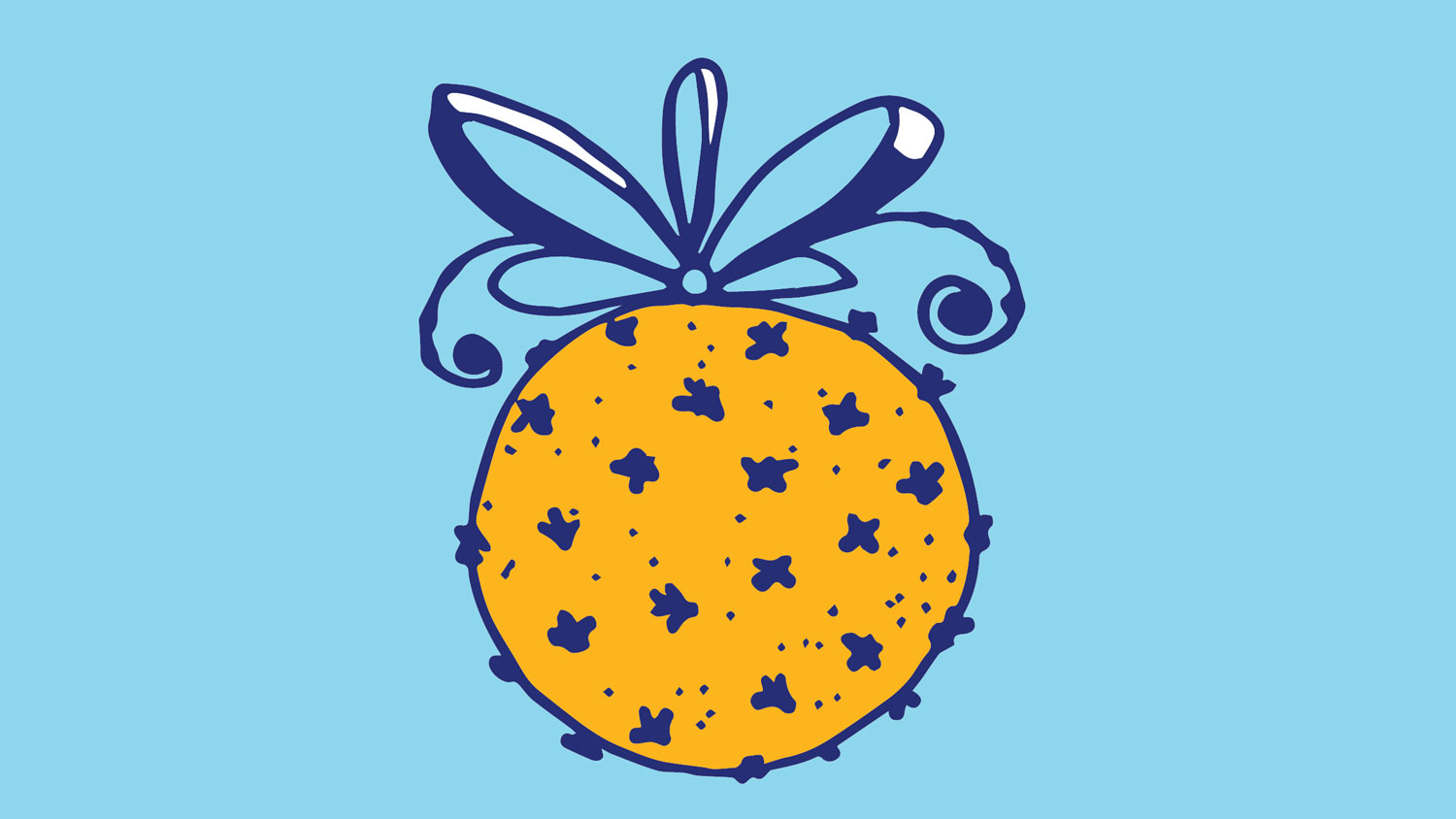
What do you need?
- An orange, satsuma, clementine or tangerine
- A handful of whole cloves
- Some ribbon or string (optional)
How to make it
- Push the pointed end of the whole clove into the orange until only the round end of the clove shows.
- Do this with as many cloves as you like. You could create a pattern, or stick them in randomly – whatever looks best to you!
- If you have difficulties pushing the cloves in, you could try making a small hole in the orange with a pencil or pen-tip first, and then push the clove into the hole.
- If you have ribbon or string, tie some around the orange to complete. Tie it first around the circumference and then from bottom to top. Finish with a little loop and/or a bow at the top, so that you can hang it.
Spice mix
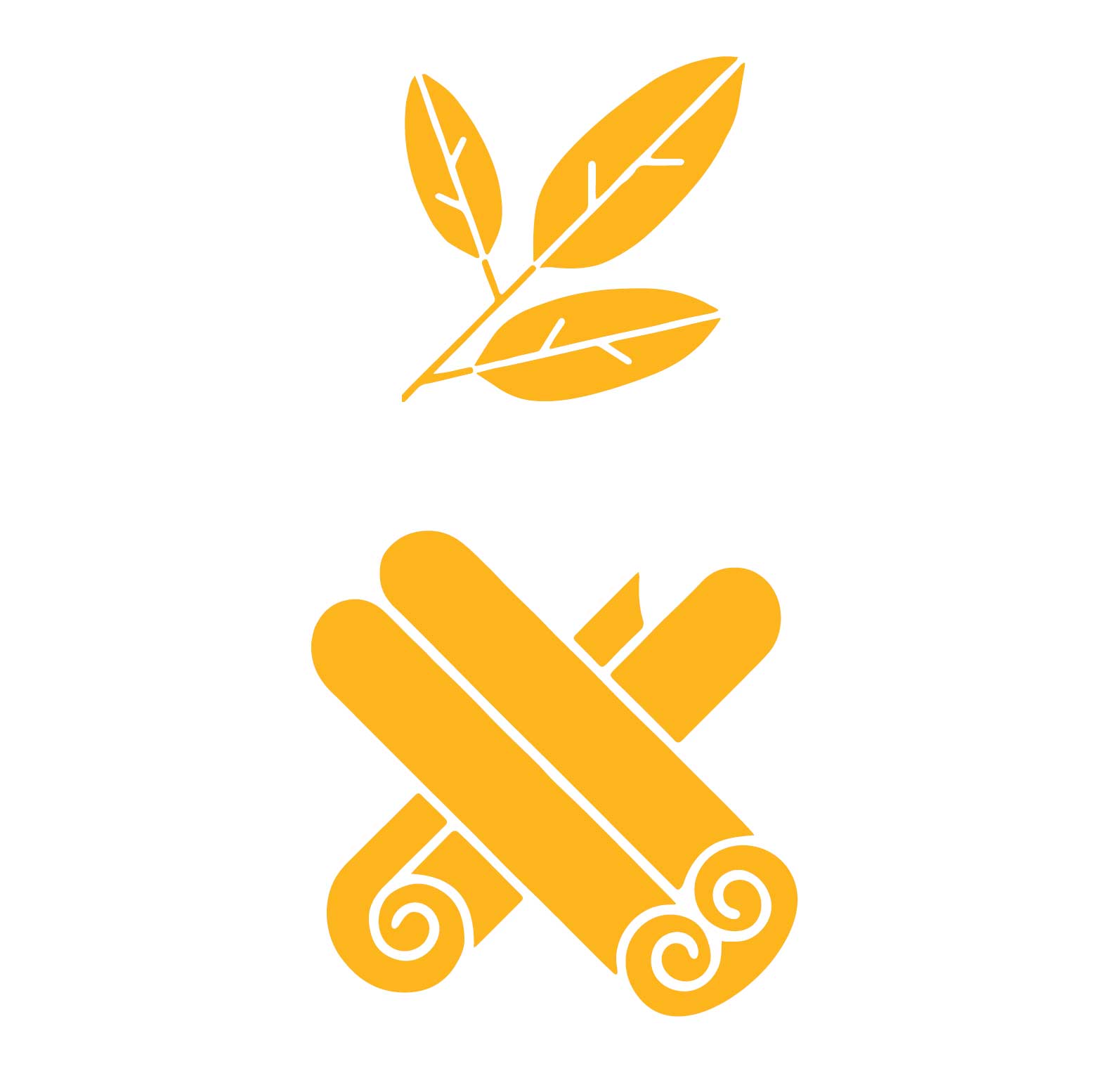
Do you have a cupboard filled with delicious smelling spices, or perhaps there’s a jar of something hidden at the back of a cupboard?
Pour some different spices out into a dish or dishes. How do they smell? Do they remind you of anything?
You could cover your eyes and try to guess which smell belongs to which spice. Or mix the different spices together to create a delightful aroma. You could even strengthen your wrists by grinding a few spices down in a pestle and mortar, if you have one.
Move and groove
Sing and dance to these well-known songs!
Drunken sailor
‘Drunken Sailor’ is a sea shanty, sung to accompany certain work tasks aboard the sailing ships which brought exotic treasures to London’s docks. It is believed to originate in the early 19th century and would be sung by the crew as they hauled a rope, when a fast working pace was demanded.

What shall we do with a drunken sailor,
What shall we do with a drunken sailor,
What shall we do with a drunken sailor,
Early in the morning?
Way hay and up she rises
Way hay and up she rises
Way hay and up she rises
Early in the morning!
Daisy, Daisy
‘Daisy Bell (Bicycle Built for Two)’ is a popular song, written in 1892 by British songwriter Harry Dacre. The song first became successful in a London music hall, in a performance by Katie Lawrence.
Music halls provided one of the only entertainment options for many of the hard-working men and women who worked around the Docklands.

Daisy, Daisy,
Give me your answer, do!
I’m half crazy,
All for the love of you!
It won’t be a stylish marriage,
I can’t afford a carriage,
But you’ll look sweet on the seat
Of a bicycle built for two!
That's all we have for you this time, but remember to join us again next month!
You can find all the issues of Creative & Connected right here.








